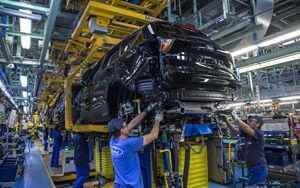(Finance) – The beginning of the new year marked the collapse of the car market. According to the data released today by Ministry of Infrastructure and Sustainable Mobility in January 2022 – based on the findings of the National Vehicle Archive as of 31.01.2022 – were 107,814 cars registered compared to the 134,198 registrations registered in the same month of the previous year, equal to a decrease of 19.66% on January 2021. A decrease that is even more pronounced when compared to the pre-pandemic period (-34.8% on January 2019 ).
THE transfers of ownership – according to the certifications issued by the Motorization Offices in January 2022 – there were 348,137 compared to 259,244 passes registered in January 2021, with an increase of 34%. The global volume of monthly sales, equal to 455,951, involved 23.65% new cars and 76.35% used cars.
“The echo of the excellent result achieved by our country with the growth of 6.5% of GDP in 2021 is still alive, but to curb the enthusiasm – highlights the Promotor Study Center commenting on the Mims data – the cold shower immediately arrives of the news of another catastrophic data for the car market. The gravity of the situation is well highlighted by the fact that, if we project the data of last January on the whole of 2022, we obtain a volume of registrations, for the whole of 2022, of 1,198,000 cars with a decrease of 17, 8% on 2021 “.
According to the Centro Studi Promotor, the current situation of the car market is, therefore, “absolutely anomalous, not only because the level of registrations would bring us back to the 60s of the last century, but also because the trend of the sector risks being in stark contrast to that of the economy “. In 2021 the car market – notes the Centro Studi – grew by 5.5%, but for 2022, while, according to the Bank of Italy, GDP growth of 3.8% is expected, the car market, if the current trend is not reversed, it could record a decline of 17.8%. “It is quite evident – he underlines Gian Primo Quagliano, president of the Promotor Study Center – that, in the absence of immediate interventions, the auto sector, which is worth 12% of GDP, could become a heavy ball and chain for GDP, putting the prospect of growth of 3.8% expected for this year “. Underlining how, contrary to what has been announced, the situation of the car has not been addressed in the context of the Budget Law for 2022, the Centro Studi Promotor recalls
with extreme urgency “the need for immediate government interventions to reverse the very dangerous trend underway by addressing the car crisis both with measures that favor the ecological transition through the renewal of the vehicle fleet and with measures that also aim to neutralize the negative effects of the transition on employment and production of particular sectors of the automotive sector “.
On the same line the Unrae. “We hope that now, finally, the Government will take back the dossiers, such as the automotive one, which in recent months have been completely neglected”, says the president of theUnrae Michele Crisci. The list of measures advocated by UNRAE starts from the need to rapidly implement the plans envisaged by the PNRR for electric vehicle infrastructure networks, with a precise time schedule on how to invest the allocated resources. “It is also urgent – he adds Believe – carry out the projects of the Ministry of Economic Development to support the purchase of low-emission vehicles, so as not to block the electrification process in our country. And, finally, to align the Italian taxation of company vehicles with that of the main European major markets in order to make Italian companies competitive. These are essential measures to support the ecological transition for the benefit of companies, workers, consumers and the entire community. Without interventions, the ecological transition will be severely slowed down if not interrupted and Italy will risk remaining behind in green policies compared to Germany, France, Spain and the United Kingdom, condemning the development of the ECV market in Italy to backwardness. Village. The month of January is already a confirmation of this with a share of BEV and PHEV falling to 8.4%, losing almost 5 points compared to last December “.
